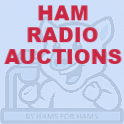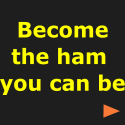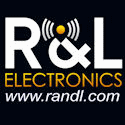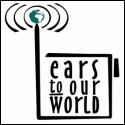Posts Tagged ‘Think’
 Make The Contact
Make The Contact
 Regarding the important religious issue of ham radio modulation, I am agnostic. There is room in ham radio for many modes including CW, AM, FM, SSB, RTTY, DV, FT8, and more. This springs from my belief that the universal purpose of amateur radio is to have fun messing around with radios. As long as you are obeying the FCC rules (or equivalent), having fun, and not being a pain to other radio hams, you have my full support to choose whatever emission type you prefer.
Regarding the important religious issue of ham radio modulation, I am agnostic. There is room in ham radio for many modes including CW, AM, FM, SSB, RTTY, DV, FT8, and more. This springs from my belief that the universal purpose of amateur radio is to have fun messing around with radios. As long as you are obeying the FCC rules (or equivalent), having fun, and not being a pain to other radio hams, you have my full support to choose whatever emission type you prefer.
When I mention the use of FT8, I often get comments from folks disparaging the mode. Usually, the complaint is that FT8 is too impersonal or that it relies too much on DSP and computer power to get the job done. Those are actually valid complaints. Most of us would rather hear the voice of the other operator (or their CW fist) and have just a bit of interaction with them, even if it’s just “Roger, Five Nine Colorado.” (JS8 is a digital mode that provides a bit more interaction, so that is another option.) And there is no question that we depend on the technology to make the contact (more so than your typical CW or SSB contact.)
Recently, I wrote about how I need A Reason To Get On The Air, which is all about going after some particular operating activity whether it be DXCC, SOTA, POTA or whatever. The main objective of such activity is making a radio contact. Can I get my electromagnetic wave through the ether and have it arrive at the other station’s location? Then can they get their signal back to me, so we have a legitimate contact. If so, I get to check the box on that radio contact. See What is a Valid QSO?
I am not alone because many hams are voting with their transceiver settings on a daily basis, choosing FT8 over other modes. They are prioritizing making the contact higher than having a robust conversation with another radio operator. In fact, I sometimes hear radio amateurs comment that they prefer not having to deal with the standard chit-chat that provides a signal report, name, location, etc. They would rather just get the contact and put it in the log.
And it’s not just FT8. Many examples of ham radio operation emphasize making the QSO, independent of the mode used: SOTA, POTA, IOTA, DXCC, WAS, WAZ, contesting, EME, meteor scatter, and more. Meteor scatter is an interesting one…on the surface, it is not the most exciting activity. Sometimes it feels like watching paint dry because it may take 20 or 30 minutes to complete a contact. However, there is clearly a challenge here…can I bounce a signal off a meteor trail and have it reach the other station? And can I hear the other station’s reply? I’ve worked new stations and grids on 6m and 2m using this method and I enjoy getting a new one in the log. Perhaps not much different than busting through a CW or SSB pileup trying to work a rare DXpedition.
So keep having fun messing around with radios, using whatever mode you like.
And make the contact…we can talk about it later.
73 Bob K0NR
The post Make The Contact appeared first on The KØNR Radio Site.
 Data on Amateur Radio Operating Habits
Data on Amateur Radio Operating Habits
Most active hams know many other radio hams and we think we have a handle on what ham radio activity is occurring. But our look into the hobby is limited by who we hang out with and the sources of information we consume. Also, we can see that the ham population is aging which is going to have a significant effect on amateur radio activity but we may not have any reliable data.
In general, the amateur radio community lacks publicly available data on amateur radio operating habits and demographics. So I was excited to see the Operating Patterns Among Canadian Amateurs authored by my friend Frank Howell, K4FMH. This report analyzes the survey of Canadian hams done by Radio Amateurs of Canada (RAC) in 2021. Frank is a Real Researcher, so he applies generally accepted statistical techniques to aid in understanding the data. I would have preferred a study of US radio amateurs, but it seems reasonable that the operating habits of Canadian hams would be similar to US hams (and perhaps a good proxy for other developed nations). Anyway, it is the data we have and it is probably useful. I encourage you to download the report and read it for yourself, but I’ll comment on three findings from the report that strike me as significant.
Digital is really popular
The figure below is a chart that shows the popularity of different operating activities. No surprise, Casual Operating and Traditional Voice Modes score very high. But number three is Digital Modes, almost as high as Traditional Voice Modes. Depending on your operating habits, you may be thinking “well,of course, digital is very popular” but others may think “really, people like doing that?” The report also points out that digital operation is correlated with age, with younger hams using digital more than older folks.
 Ham careers can start at any age
Ham careers can start at any age
Another interesting finding is that the classic stereotype of “young person discovers radio and pursues it as a lifelong hobby” is not universal. The report shows that people enter the hobby at a variety of ages and then pursue it with varying intensity. Quoting the report:
Thus, these data illustrate that our conventional image of the amateur who gets licensed early in life and maintains that hobby activity throughout is largely a stereotype. Although it is one based upon real-world examples who fit it ideally.
I see this when teaching Technician license classes. The ages of our students typically span a wide range, including youth, but many of them are over 40 years old, entering the hobby later in life. In addition, we have quite a few students around retirement age (60 or so) looking for an activity to engage in during retirement.
The ham population is aging
You are probably thinking: duh, of course it is aging. The report puts some numbers on it, comparing it to the general population in Canada (see figure below).
 Clearly, the ham population is over-represented in the age groups above 50 years. Often, the conventional thinking is “we have to get the kids involved,” which is a worthy thing to do. However, the report warns us that this won’t be enough:
Clearly, the ham population is over-represented in the age groups above 50 years. Often, the conventional thinking is “we have to get the kids involved,” which is a worthy thing to do. However, the report warns us that this won’t be enough:
This pattern has two clear implications for amateur radio in Canada. One is that the age groups of 60-80 years of age, now dominating amateur radio as the RAC Survey suggests, will simply disappear as they age-out to infirmity or becoming Silent Keys. Yet, their non-ham radio peers are scheduled to grow in number. (A recruitment focus on late-in-life hams is a clear policy for RAC to consider.) A second implication is that teens will be a relatively scarce recruitment commodity in terms of the age pyramid. There will simply not be enough of them to replace those Baby Boomers now dominating the hobby, regardless of the recruitment resources directed toward them.
This is not a call to give up on recruiting youth:
This should not be misconstrued to suggest that it would be a waste of time to expose young people to amateur radio as a recruitment method.
More to consider
This post highlights three findings that I found to be interesting. There is much more information included in this report and I encourage you to read and ponder it. I’d certainly like to see more of this kind of work published, especially for the ham population in the US, Europe and Japan. I find the demographic analysis compelling, indicating that we will see a decline in the number of radio hams in the next decade or so. We can probably reduce this decline but not stop it (my opinion, worth at least what you paid for it.). Perhaps the way to think about the challenge is to focus on having a smaller but more vibrant and active amateur radio community in the future.
These are my thoughts for today.
What do you think?
73 Bob K0NR
The post Data on Amateur Radio Operating Habits appeared first on The KØNR Radio Site.
 Ham Radio Gamification
Ham Radio Gamification
 Setting operating goals has been useful for me in ham radio. They often provided a reason or incentive for me to get on the air and make some contacts. I followed the typical award sequence of Worked All States (WAS), Worked All Continents (WAC), DX Century Club (DXCC), and so forth. I wrote about it here: Pursue Radio Operating Goals.
Setting operating goals has been useful for me in ham radio. They often provided a reason or incentive for me to get on the air and make some contacts. I followed the typical award sequence of Worked All States (WAS), Worked All Continents (WAC), DX Century Club (DXCC), and so forth. I wrote about it here: Pursue Radio Operating Goals.
Gamification
Over time, I’ve come to realize that some amateur radio activities include the elements of gamification. Gamification is a hot topic in user interface design, online learning, and other computer-based systems. The basic idea is to incorporate gaming techniques into activities to increase user engagement. From Wikipedia:
Gamification techniques are intended to leverage people’s natural desires for socializing, learning, mastery, competition, achievement, status, self-expression, altruism, or closure, or simply their response to the framing of a situation as game or play.
Gamification commonly uses these elements (also from Wikipedia):
Game design elements are the basic building blocks of gamification applications. Among these typical game design elements, are points, badges, leader-boards, performance graphs, meaningful stories, avatars, and teammates.
This article discusses some of the principles involved and Dennis/AD6DM wrote this piece on the topic: The Gamification of Ham Radio.
Summits On The Air
I first became aware of this topic after I became involved in Summits On The Air (SOTA). Before SOTA was a thing, I was often found on the top of some summit making radio contacts. So when SOTA was established in Colorado (W0C), I thought “this is interesting but I am already doing it.” It did strike my fancy enough that I started submitting logs into the SOTA database. Oh, guess what, many of my mountaintop operations were the first activation for SOTA. How about that? I am the first. I win. I have bragging rights, or something.
Soon I was accumulating SOTA activator and chaser points. My first objective was to qualify for the 100-point activator certificate. (SOTA has many certificates and awards.) Achieving 100 points took me about 15 activations, so it is not too difficult but does represent an accomplishment. It did not take very long to do this and soon I was focused on 1000 points for the coveted Mountain Goat award. That goal took several years to complete, but I got it done. I decided to only use the VHF/UHF bands for the Mountain Goat award, so that was my little personal twist on that accomplishment.
We can clearly see that the SOTA program has these elements of gamification: points, badges (certificates/awards), and leaderboards. For me, the leaderboard is the Activator Role of Honour, with the Colorado (W0C) Association selected:
 At the moment, I am #12 on the list. I do not aspire to be at the top of the list but I do want to be on the list, somewhere above the 1000 mark. I also like to see how my fellow W0C SOTA activators have been doing. For example, it has been fun to watch Szymon/WV0X go from zero activator points to over 1800 in a short period of time. Also, Gary/W0MNA and Martha/W0ERI are a couple from Kansas (no SOTA summits in the state) that have both made it to Mountain Goat. Not an easy accomplishment. It is cool to see that we have 19 Mountain Goats in the association and more on their way. Pretty good!
At the moment, I am #12 on the list. I do not aspire to be at the top of the list but I do want to be on the list, somewhere above the 1000 mark. I also like to see how my fellow W0C SOTA activators have been doing. For example, it has been fun to watch Szymon/WV0X go from zero activator points to over 1800 in a short period of time. Also, Gary/W0MNA and Martha/W0ERI are a couple from Kansas (no SOTA summits in the state) that have both made it to Mountain Goat. Not an easy accomplishment. It is cool to see that we have 19 Mountain Goats in the association and more on their way. Pretty good!
SOTA does not specifically have any teams formed as part of the program but the camaraderie of W0C is essentially a team. We share information about various summits and encourage each other when new goals are achieved. Sometimes groups of activators get together for a joint activation. (Most areas that have significant SOTA activity also have this community/team effect.)
Parks On The Air
Recently, I have become involved with Parks On The Air (POTA), which also has gamification built into it. POTA has the advantage of parks being virtually everywhere. (Unlike SOTA summits, Kansas has parks to activate.) As Joyce/K0JJW and I have traveled around the country, POTA has been a satisfying activity to include in our plans.
POTA has many different award schemes, too many to mention here. I pulled up my awards page to see what I have qualified for:
 The objective I have set for POTA is to activate all the parks in Colorado. I want to visit them anyway, so this is a good opportunity to blend ham radio with our travel plans. There are 187 POTA parks in Colorado, so this is going to take a while to complete.
The objective I have set for POTA is to activate all the parks in Colorado. I want to visit them anyway, so this is a good opportunity to blend ham radio with our travel plans. There are 187 POTA parks in Colorado, so this is going to take a while to complete.
Implications
Gamification can be used to make ham radio activity more fun and to more fully engage the participants. Traditional radio contesting is clearly a competition and has the elements of keeping score, having leaderboards (after the contest) and having teammates. However, most contests provide painfully slow feedback. The official results may not be posted until 6 months later. (The 3830 Scores website was created to bypass this delay by sharing scores immediately.) Contesting is obviously a game, so where’s the gamification?
Perhaps your radio club (or just your group of ham friends) can use gamification to have fun. You could leverage programs like SOTA and POTA to create a club activity. Pursue a club goal (activate 50 parks or summits this year), a friendly competition, whatever. POTA lets you activate with a club call while still providing credit for the operator, so that opens up some possibilities.
If you are getting stale in your ham radio operating, perhaps one of these gamified programs would be good motivation for you. It could be SOTA or POTA (both include chasing, so you can do it from home), or maybe some other program out there.
Those are my thoughts. What do you think?
73 Bob K0NR
The post Ham Radio Gamification appeared first on The KØNR Radio Site.
 A Different Approach to a New Year: the Ham Systems Think!
A Different Approach to a New Year: the Ham Systems Think!
What is the most important aspect of life? Having fun! (Of course!).
Perhaps it is unusual to wax philosophical in an amateur radio forum, but I am going out on a limb to share a perspective that hopefully is refreshingly new and full of life: Systems thinking — an amateur radio approach.
What I’m sharing herein, I find very intense, invigorating, challenging, and motivational! The more I think about amateur radio with this perspective–the Systems Thinking perspective–the more fun I’m able to define, and then accomplish.
In my opinion, this approach to life is REVOLUTIONARY! Why isn’t this knowledge distributed far and wide? Why aren’t these precepts taught in the schools for young children, so that they can be equipped for a life full of accomplished purpose? Perhaps it is due to the deceptive simplicity of approaching life with the perspective of Systems Thinking.
SYSTEMS THINKING AND AMATEUR RADIO
What is Systems Thinking?
In a very simplistic sense, a system is any group of parts that make up one complex whole. Each part cannot function as the whole, and each part interacts with other parts, such that this behavior affects that end result which is expressed by the whole.
Think about a motorcycle. Let’s play with that thought: I disassemble my motorbike in your living room. Once the bike completely taken apart and the parts are scattered all over your living room floor, can any one of those parts support my riding it out to the countryside, and back again? No. Only the bike can act, when it is made whole again, as a motorbike. But, even if the individual parts, doing their part well, try to be the bike all by themselves, but fail, in the end realize that the parts are very important. Each part has a place and a job. Each part belongs.
By now, as you think about this, you probably realize that there is a difference between collections, and systems, of course. A bag of rocks is not a system. A motorcycle is a system. A bag of motorbike parts is not a motorbike. The assembly of the motorbike parts does make a motorcycle.
What does this have to do with amateur radio?
The amateur radio service (hobby) is a system, not a collection. There are many parts–and one of the most important component of the amateur radio system is you and me. We interact with each other, exchanging knowledge, reports, friendships; we each function, lending our functioning the the autonomous self, the amateur radio service.
It takes more than one of us to make up the amateur radio service. It would take at least two amateur radio operators, at the most extreme emaciated existence as a public service. It is obvious that one ham, all by herself, does not make the amateur radio service. No one of us is the amateur radio service, by ourselves. We need each other in order to have a ham radio community–the amateur radio service. Ourselves, our radios, antennas, computers, knowledge, schedules, and so on, are all parts of the big system with which we participate in our community.
Let that sink in.
Ponder the long-term repercussions of this revelation: We need each other, and we need our resources (time, skills, knowledge, radios, etc.).
How do we shape our System? What will elevate our System so that it is effective? And, so we begin to do this, SYSTEMS THINKING.
Please read, and ponder these thoughts, as you read through this article:
https://thesystemsthinker.com/a-lifetime-of-systems-thinking/
Additionally, you should check out this video–it is great!
Bonus (not necessary but still VERY good deeper dive):
In my estimation, Dr. Russell Ackoff is amazingly wise, and inspiring!
SYSTEMS THINKING
At the moment, I am studying and trying to implement system thinking. It is the topic I am mostly studying right now.
The following is an introduction to Systems Thinking:
https://thesystemsthinker.com/
Download this useful paper that helps you understand system thinking:
http://nw7us.us/systems-thinking/Introduction-to-Systems-Thinking-IMS013Epk.pdf
I would very much like to hear your thoughts on all of this. Seriously. Take your time. But, let’s start wading through this pool of refreshing water…
Happy New Year!
Tomas Hood
NW7US
Addendum: I do not necessary agree with every perspective, conclusion, or point made by Dr. Russell Ackoff. Never-the-less, the overarching idea of systems thinking seems valid, and is worth considering.
 Ham Radio, Chess and Model Railroading
Ham Radio, Chess and Model Railroading
Every once in a while, I look at the number of licensed radio amateurs in the US and ponder how ham radio participation rates compare with other hobby activities. Take a look at this post from 2005: Some Amateur Radio Statistics and this one from 2015: Ten Year Trends in US Ham Licenses.
The latest number of FCC amateur radio licenses (March 2018, from ah0a.org) is 749,711 (Novice: 8847; Technician: 379,735; General: 174,478; Advanced: 41,153; Extra: 145,498)
The population of the United States (2018 estimate) is 325 million which means that FCC amateur radio licensees are 0.2% of the US population. (Yes, this number surely overstates the number of active radio hams.) From the 2017 Annual Report, ARRL membership is 159,070, which is a decline of 3% from the previous year, apparently associated with a recent dues increase. There is a slight time skew in the numbers but this means that ARRL membership is ~21% of the FCC licensees. This represents about a 2 point decline from the same calculation for 2005. Not a good trend.
It is interesting and maybe even useful to compare these numbers to other activities we are familiar with in the US.
Fishing
I stumbled across an in-depth analysis of sportfishing (basically all kinds of recreational fishing) by the American Sportfishing Association. This report on US Angler Participation says that 49 million people in the US participate in fishing, or 15% of the US population. Frankly, that number seems a bit high but let’s just go with it. Perhaps what’s more interesting is their analysis of renewal rates for fishing licenses and potential reasons for why people start and stop fishing. Oh, guess what? Young people are not pursuing fishing at the same rate as adults so there is concern about the future of the sport. Browse through the website and you will find reasonably good data on the state of fishing in the US.
Outdoor Sports
The Outdoor Industry Association publishes data on a wide variety of sports ranging from bicycling to birdwatching. According to their numbers, every activity they track has a larger percent of the US population than the FCC amateur radio license number. A very popular outdoor activity is bicycling, with a participation rate of 24%. Other significant sports listed include camping (21%), running (21%), hunting (6%) and downhill skiing (4%). Even birdwatching comes in at 3% and snowshoeing is listed as 1%. This report also analyzes participation rates, motivations and trends by race, age and other factors. Good stuff.
Chess
I came across a web page that asks the question “how many people play chess?” This caught my eye because I think there are significant similarities between the game of chess and amateur radio. The answer: no one knows.
One study claims that 15% of the US population plays chess at least once per year. This would be close to 50 million players and put it in the same participation class as camping or bicycling. That just seems too high…I can name quite a few of my friends and family that camp and bike. I can’t name hardly any that play chess regularly.
The US Chess Federation has 85,000 members, who are presumably actively involved in chess (for the most part). There are probably many times more people that play chess casually. A wild and generous guess of 10 times or 850,000 players would still only be 0.26% of the US population.
The chess community has many effective programs to help children get started in the game. This is probably a real strength for that community. However, I noticed several discussions in online forums lamenting the fact that children tend to drop the game in their teen years. Also, Sports Illustrated just published an article about how chess has always been dominated by men with women making limited gains in participation.
Model Railroading
Then someone on reddit asked why ham radio magazines have disappeared but model railroading magazines are quite available at the local bookstore. Now that is an interesting comparison. Model railroading is a well-established hobby that many people pursue for enjoyment. It is a bit “old school” with a strong hands-on “maker” aspect to it. It has also has seen the impact of newer technology, especially digital electronics. In terms of alternative activities, it is seeing competition from radio-controlled cars and aircraft.
This online forum puts the number of US model train hobbyists in the range of 150,000 to 300,000, but without much in the way of hard numbers (just anecdotal evidence). One person argued that the number is more like 1 million hobbyists. This web site makes the claim (without references):
Today there are a half million model railroaders and toy train hobbyists in the US and Canada!
But many model railroaders see challenges ahead. This Wall Street Journal article discusses how the demographics of the railroader population are changing: End of the Line for Model Trains? Aging Hobbyists Trundle On
This web site also discusses the trends in model railroading. I found this quote to be relevant:
This hobby (as well as a lot of other markets) is currently dominated by the baby boom generation. They will be dwindling in numbers over the next ten years, and the generations behind them just don’t have the numbers to fill in unless there is a significant boom of interest in model trains.
One commenter suggests there are 1 million model railroaders in the US.
Analysis
First, I am struck by the number of different hobby and sports activities available to us. From a historical perspective, North Americans have significant leisure time and a multitude of activities to choose from. Some of those are “mainstream” in the sense that most people are aware of them and many people do them (examples: fishing, bicycling, running). Other activities fall into a niche (< 1% of the US population) but still have vibrant communities that pursue them with gusto (examples: chess, amateur radio, model railroading). The participation rate for Chess may actually be higher than 1% of the population…I’m really not sure…but it looks more like a niche activity than a mainstream hobby.
The mainstream activities tend to have access to good data on participation in the sport or hobby while the niche activities tend to be lacking reliable data. It seems that the more popular activities have a industry association or member organization with sufficient resources to pursue obtaining participation data and maintaining it over time. The information available concerning sportfishing and outdoor activities was pretty impressive. Chess, amateur radio and model railroading…not so much. If you are worried about the health of a hobby or sport, the first step is to have accurate data. (I recently heard that ARRL Headquarters is pursuing this. I certainly hope so.)
Participants in many of these activities express concern about the demographics of their communities. There are lots of comments on web sites about needing to attract younger participants for the future of the hobby, along with comments about how kids don’t seem to be interested. The big concern was getting kids involved but there are also issues of low participation by women. Certainly, we hear these same concerns in the amateur radio community.
One big takeaway is that amateur radio is not the only community that is concerned about growth. I’d really like to hear from radio amateurs that are active in chess and model railroading, to compare and contrast their experiences.
73 Bob K0NR
The post Ham Radio, Chess and Model Railroading appeared first on The KØNR Radio Site.
 FM VHF: The Utility Mode
FM VHF: The Utility Mode
 I’ve been referring to the VHF FM as the utility mode for quite a while now. I picked this up from Gary Pearce/KN4AQ when I inherited the FM column from CQ VHF magazine (no longer being published). Gary recently filled me in on the origin of this term, which he captured in his first FM column for CQ VHF.
I’ve been referring to the VHF FM as the utility mode for quite a while now. I picked this up from Gary Pearce/KN4AQ when I inherited the FM column from CQ VHF magazine (no longer being published). Gary recently filled me in on the origin of this term, which he captured in his first FM column for CQ VHF.
Gary describes how he got hooked on VHF operating, especially 2m FM:
I’ve been a ham since 1965 (age 15). Today, I have an Extra class license, and I operate some HF (mostly SSB and digital, with cw limited to occasional bouts at Field Day). But since my first days as a Novice with a Heathkit Twoer, I’ve been a VHFer. I went through the 2 and 6 meter AM days with a Heath Seneca and Utica 650, and then SSB with a Gonset Sidewinder and Hallicrafter HA-2 transverter. But what really flipped my switch as an early ham was an old, single-channel Motorola 80D on 146.94 simplex, installed in the car of a teenage friend’s father. For you newer hams, this is an exercise in nostalgia that I don’t have space here to explain – I wish I could. I will note that the Motorola 80D was an FM radio that began life in a police car or taxi cab somewhere. It was a huge, heavy, all-tube radio that sat in the trunk and improved traction on the ice. Below the dash was a control head with volume, squelch, and the microphone and speaker.
It wasn’t long before I learned about repeaters, which enhanced the FM experience immeasurably (all four of them in the Chicago area at the time). My interest in VHF SSB waned…Getting involved in a local repeater group felt comfortable – this was someplace where I could really participate.
But then things shifted as time passed. Gary wrote:
While I wasn’t looking, FM became just another mode. At least that’s the consensus I got from some of the guys who have been doing Amateur Radio publishing a lot longer than I have…
Some columns devoted to sub-sets of Amateur Radio have lasted for decades. VHF-UHF is one. That’s the weak-signal side of VHF, not the FM side. Digital modes go through enough reincarnations to keep interest up. DX, contesting, QRP, holding their own.
But not FM/Repeaters? QST editor Steve Ford, WB8IMY, suggested why, and gave me the idea for this column’s “Utility Mode” tag line. He said, “Our research has shown that while FM users comprise a very large portion of the amateur community, the majority tend to perceive their FM activity more as a ‘utility’ function rather than a hobby.”
FM VHF is arguably the most common mode used in amateur radio. (Can I back that up with reliable data? Not sure, but I’m pretty sure it’s true.) I do see where it fits into the concept of a utility function or utility mode. Think about the electrical system in your house (a utility). For the most part, you just plug things in and use it but you probably don’t consider yourself a 120 VAC hobbyist. Well, a few of you might but that’s another issue. FM VHF is a lot like that…most hams have it and they just use it without too much consideration. Push the button and it works.
But that definition is a little bit derogatory…FM VHF is just there and no one appreciates it. The Eeyore of ham radio modes.
Another definition of utility (as an adjective) is:
Utility: having or made for a number of useful or practical purposes rather than a single, specialized one:
This fits my perception of FM VHF: very useful for many things. Whether you are providing communications for a bike race, handling talk-in for a local hamfest, working the ISS, chatting across town while mobile, the first choice is likely to be 2m (or 70 cm) FM.
And that’s why I’ve always been a FM VHF enthusiast: there are so many things you can do with it. Just use your imagination.
73, Bob K0NR
To see what Gary KN4AQ has been up to lately, visit HamRadioNow.
The post FM VHF: The Utility Mode appeared first on The KØNR Radio Site.
 Top Five Underrated K0NR Blog Posts
Top Five Underrated K0NR Blog Posts
 Normally at the end year, I list the five blog posts that got the most hits during the year. It turns out that this list does not change a lot from year to year. For completeness and consistency, these are the top five posts for 2017, in rank order:
Normally at the end year, I list the five blog posts that got the most hits during the year. It turns out that this list does not change a lot from year to year. For completeness and consistency, these are the top five posts for 2017, in rank order:Choose Your 2m Frequency Wisely , Getting Started on 2m SSB , Can I Use My Ham Radio on Public Safety Frequencies? , DMR Hotspot from SharkRF and Introducing the Android HT
What I’m doing different this year is to list the five posts that I think readers should read but haven’t made the most hit list. This is based on my personal opinion but what the heck. You’ll see a theme of trying to make sense of how amateur radio fits into our modern world.We’ve Got Some Explaining to Do
Amateur Radio is Not for Talking
That’s Not Real Ham Radio
Is the Internet Destroying Amateur Radio?
Amateur Radio: Narrowband Communications in a Broadband WorldHere is a sixth bonus article…very interesting story about Prisoners of War building radios in World War II.
POW Canteen Radio73 and Happy New Year! Bob K0NR The post Top Five Underrated K0NR Blog Posts appeared first on The KØNR Radio Site.














